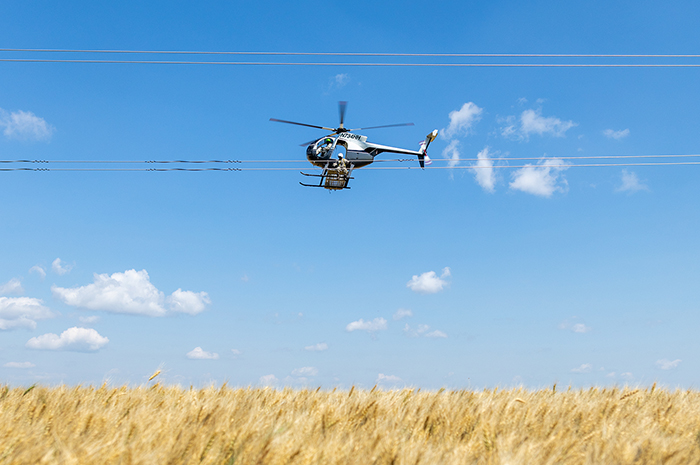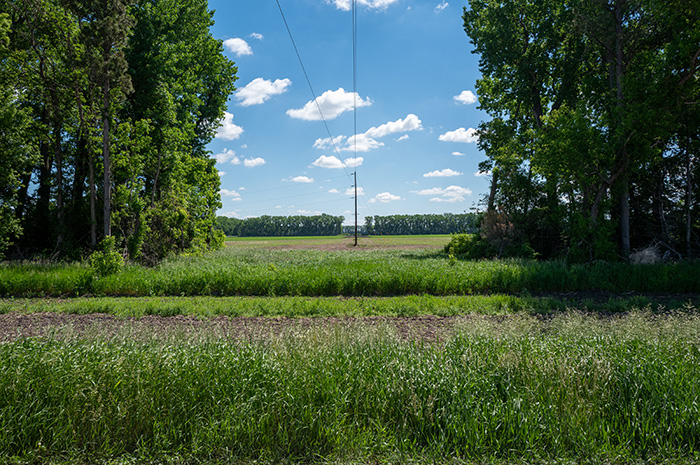Driving the dialogue on grid reliability
With grid challenges coming into focus, Minnkota leaders are working to chart a path forward.
Last summer, a heatwave gripped California’s electric grid and left much of the state sweltering through extended power outages. When winter arrived, a deep freeze in Texas turned power and heat off for millions over four days, the effects of which extended into the Upper Midwest where rotating outages were needed to stabilize the grid.
In the wake of these outage events, Minnkota Power Cooperative leaders have been on the road and online discussing the importance of grid reliability and resiliency with the nation’s top regulators and policymakers, as well as local and regional stakeholders. As the electric utility sector continues to go through one of the most transformational periods in its history, questions remain on how ambitious environmental goals will be met while maintaining affordable and dependable service.
“It is an exciting time for our industry, but it can also be daunting,” Mac McLennan, Minnkota president and CEO, told members of the U.S. Senate Energy and Natural Resources Subcommittee on Energy during a June 23 hearing. “We all want to push for it to be a better product – more reliable, more resilient, affordable for every household, and as clean as possible. To reach these goals, we need to work together as utilities, policymakers and regulatory agencies.”

About 42% of Minnkota’s generation capacity comes from carbon-free sources such as wind and hydropower. Although Minnkota has added a significant amount of renewable energy over the last 15 years and has been recognized nationally as a leader in renewable energy development, coal remains a critical resource to ensure the reliability of the electric grid.
“Harsh winters in the Upper Midwest can and do severely limit the ability of renewables to operate for extended periods of time,” McLennan testified. “During the recent polar vortex events in 2014, 2019 and 2021, Minnkota received almost no production from our wind facilities for multiple days. At temperatures of negative 30 degrees, the absence of reliable power is life-threatening.”
Midwest Energy Summit
North Dakota energy leaders, policymakers and regulators discussed lessons learned from these events and how their state plans to chart its path forward during the Midwest Energy Summit on June 8 in Fargo. The event was driven by Minnkota member Cass County Electric Cooperative and facilitated by the Fargo Moorhead West Fargo Chamber. McLennan participated in a grid reliability panel that included North Dakota Lt. Gov. Brent Sanford, North Dakota Public Service Commission Chair Julie Fedorchak, Xcel Energy President for Minnesota and the Dakotas Chris Clark and Midcontinent Independent System Operator (MISO) Executive Director of External Affairs Brian Tulloh.

While North Dakota is looking for solutions to ensure its residents have 24/7 power, it is part of two multi-state grids where the decisions of other entities have enormous impacts. Minnkota participates in the MISO market, where renewables currently account for about 10% to 12% of the grid’s resources. Tulloh said challenges begin to emerge as that percentage increases.
“We begin to see at above about 30% renewable energy penetration significant stability issues in the grid and significant changes that need to be managed somehow,” Tulloh said, referencing MISO’s Renewable Integration Impact Assessment.
“As you get up into the 50% range, those challenges become increasingly more expensive,” he added, emphasizing the importance of time and planning to reach these ambitious goals.
Fedorchak responded that the costs of the energy transition cannot be ignored and that there are serious consequences to mistakes or missteps.
“That’s not a small matter,” she said. “What they're talking about — when it gets a lot more complicated at 50% — is, it's really serious and very expensive, to the tune of $500 billion to achieve what’s been thrown out there as plans for the MISO territory.”
Grid stability challenges quickly become an issue of public safety and security, Fedorchak said.
“What I took away from the February event, was if we don’t have power, our society quickly becomes pretty unmanageable,” Fedorchak said. “If you look at Texas, they didn’t have water, they didn’t have telephones, they didn’t have heat. Our whole society is built on reliable power. We can’t do without it.”
McLennan said that the outage events in Texas and California are not once-in-a-hundred-year events, but will continue to happen if the country continues to close baseload and dispatchable resources, like coal, natural gas and nuclear, without adequate replacement.
“The reality check we have is that there has to be a long-term energy transition,” McLennan said. “We can be as excited about it as we want to be, but we have to also be practical and work our way through in a defined manner. Otherwise, we’re going to have more events like we did in February.”
EPA Administrator shows interest in Project Tundra
While reliability and resiliency of the grid must be prioritized, Minnkota also recognizes the need to make reductions in carbon dioxide (CO2) emissions. The cooperative and its members are currently in the process of evaluating Project Tundra – an effort to install carbon capture technology at the coal-based Milton R. Young Station near Bismarck, N.D. This power plant has reliably delivered electricity to the grid for decades and is well-positioned for technology advancements. Project Tundra is designed to capture 90% of CO2 emissions from the flue gas, which equates to 4 million tons per year and is the equivalent of permanently taking 800,000 gasoline-fueled cars off the road. The CO2 would be safely stored more than one mile underground near the plant’s site.
Stacey Dahl, Minnkota senior manager of external affairs, provided an overview of Project Tundra during a June 3 meeting with Environmental Protection Agency (EPA) Administrator Michael Regan and other energy leaders in Bismarck. The meeting followed a commitment Administrator Regan made to Sen. Kevin Cramer during his confirmation process, where he agreed to consult rural electric cooperatives on EPA regulations.

Regan said the Biden administration has a “positive viewpoint” of carbon capture technology, and that his role is to support the president’s goals to reduce emissions.
“The creative ingenuity in terms of the thinking around carbon management and reduction, I think, has been really refreshing,” Regan said during his visit.
“There’s no doubt there’s huge potential,” he said of carbon capture. “And right here in North Dakota we’re seeing leadership.”
MAIN IMAGE: North Dakota Lt. Gov. Brent Sanford (far left) moderates a panel of energy leaders at the Midwest Energy Summit, including (left to right) Julie Fedorchak, North Dakota Public Service Commission; Mac McLennan, Minnkota; Chris Clark, Xcel Energy; and Brian Tulloh, MISO. (Photo provided by Fargo Moorhead West Fargo Chamber)
...



